The NVIDIA SHIELD Tablet Review
by Joshua Ho on July 29, 2014 9:00 AM ESTGPU Benchmarks
On the GPU side, the Tegra K1's GPU is derived from the same Kepler GPU architecture we've seen in notebooks and desktops - albeit in a single SMX configuration. There are some power focused changes to mobile Kepler, and I’d reference our initial article on Tegra K1’s architecture for those interested in learning more. In this device, the GPU can run anywhere between 72 MHz to 852 MHz.
I included Surface Pro in a couple of the tests below just to show how far NVIDIA's Shield Tablet and Tegra K1 get in terms of pushing the envelope in gaming performance. Tegra K1 can deliver better GPU performance than the original Surface Pro, and given its price and thermal constraints isn't too far off of the newer Surface Pro tablets as well.
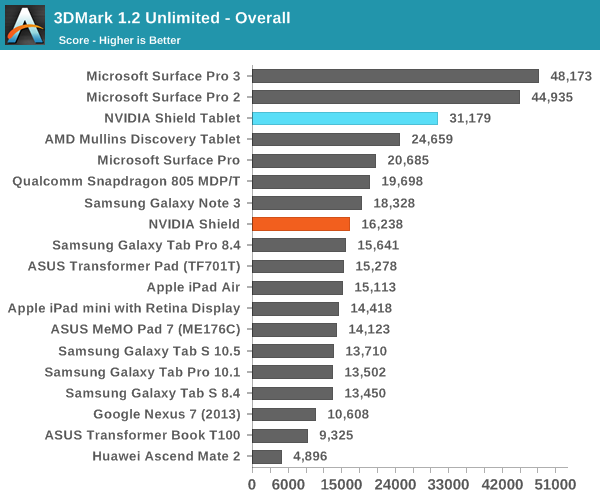
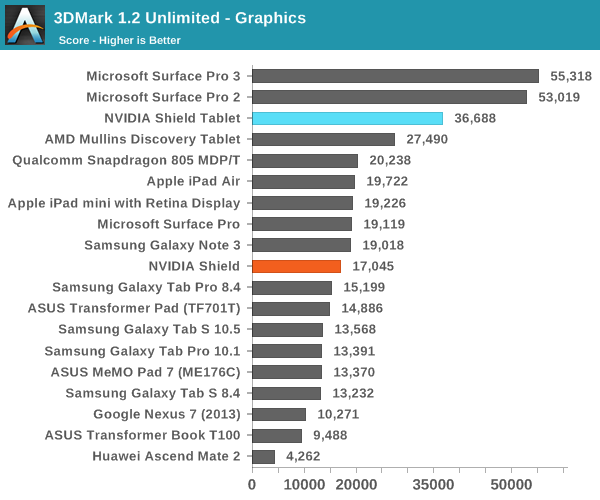

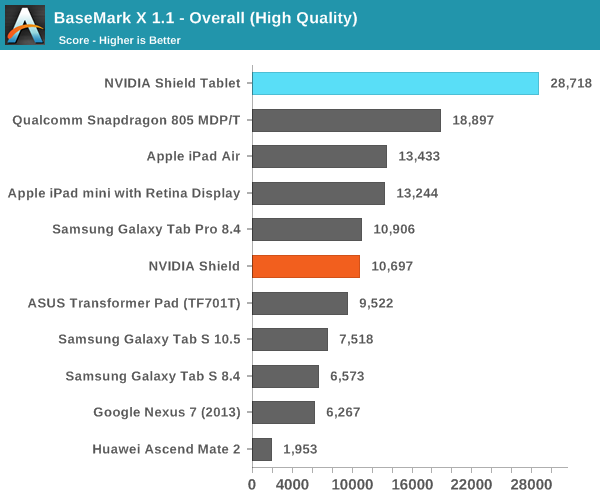
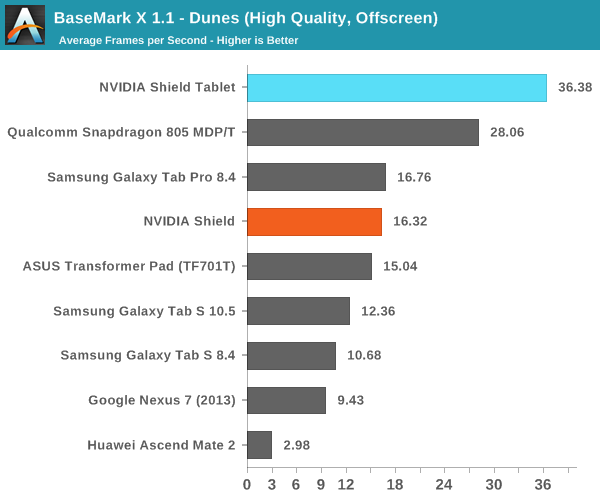
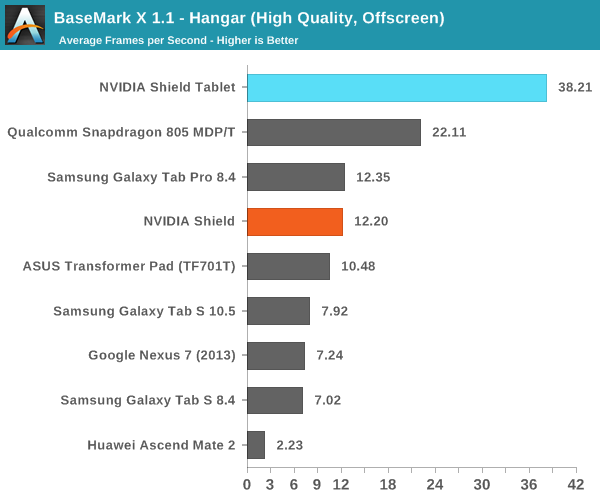
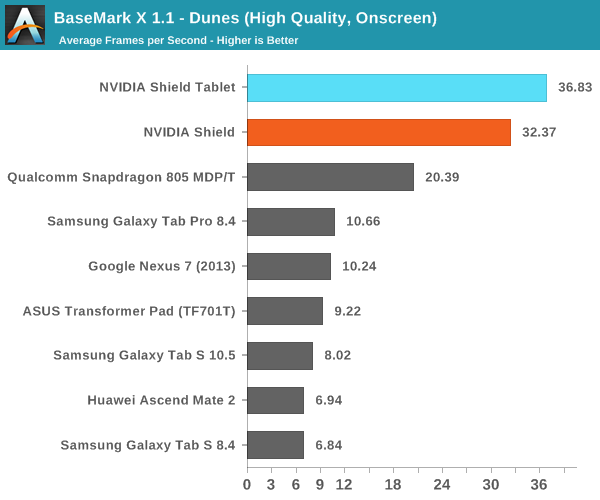
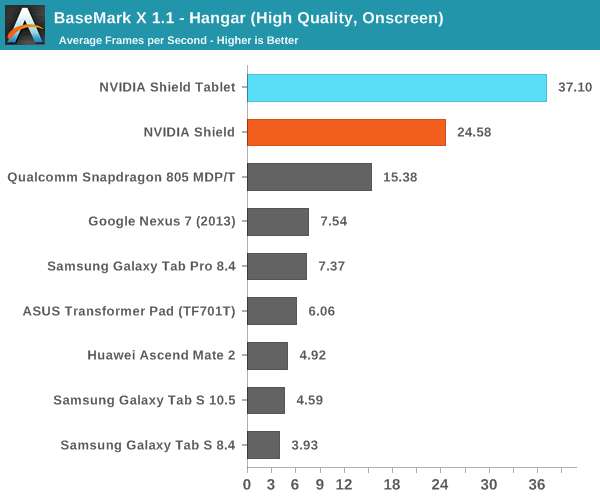
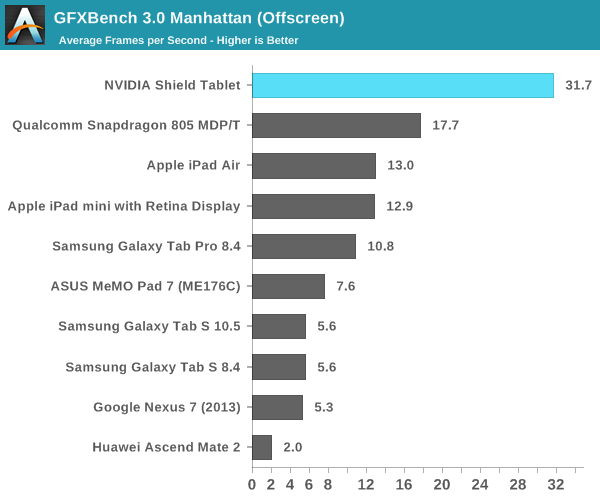
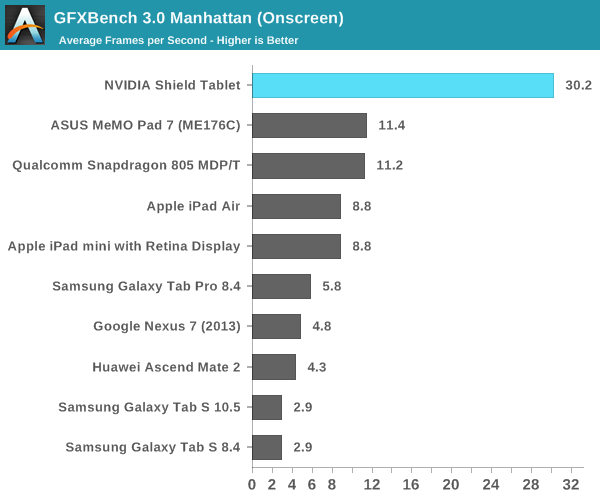
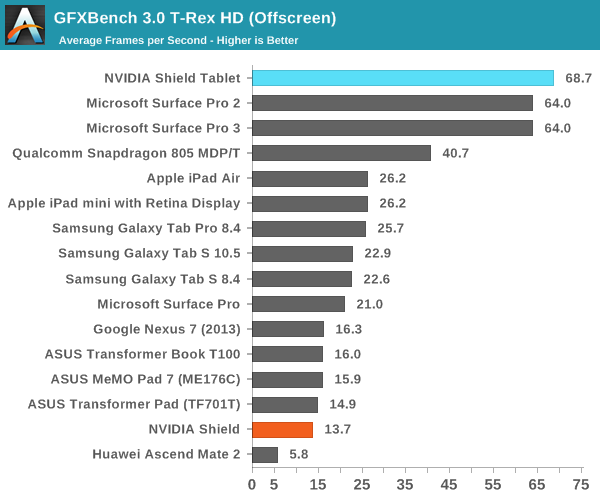
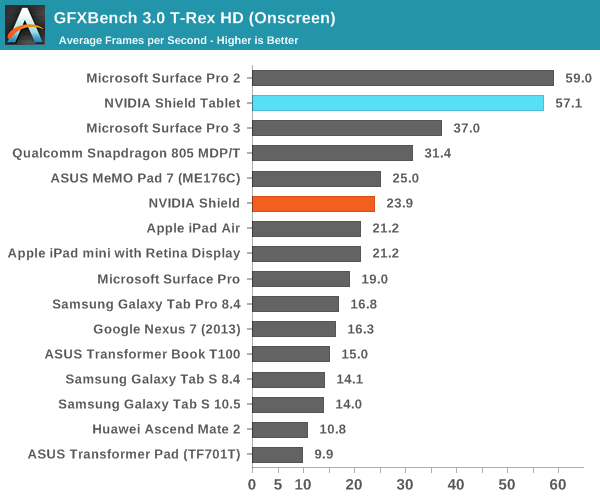
When it comes to GPU performance, there’s really no question: the Tegra K1 is easily the fastest in all of our GPU benchmarks. It handily beats every other ARM SoC, including the newest generation of SoCs such as the recently introduced Snapdragon 805 and its Adreno 420 GPU. It's worth noting that the Snapdragon 805 is likely aimed more at smartphones than tablets, although we are looking at its performance in Qualcomm's tablet development platform here. Until we get a look at Snapdragon 805 power consumption we can't really draw any perf/watt conclusions here. Ultimately, the only thing that can top the Shield Tablet is Surface Pro line, which uses more powerful laptop-class hardware.










174 Comments
View All Comments
Knowname - Wednesday, July 30, 2014 - link
you make a good point, and one I actually considered when I looked for a new toy half a month ago. The Nexus7 (2013) would be just fine for my needs. THAN I saw this out of the corner of my eye and yes, I'll admit I WAS wooed somewhat by the false fantasy that is the 'latest and greatest'. The Nexus 7 is just fine and half the price! In the end though I succumbed to consumerism and though I like to think I'm very frugal I think I made a good deal.Bottom line, it's more than just a little snappier, it's THREE TIMES as snappy! The speakers are an upgrade, the connectivity is an upgrade, SD card compatible and best of all a great selfie camera!! xD ok I kid. Anyway forget the gamestreaming stuff (though... a definite plus if you leave your computer on 24x7) it's still very future proof I won't need to upgrade my tablet for at least a couple years with this!
Unfortunately I bought a GT630 along with this hoping it'd do the trick for gamestreaming but... I don't think it will by what I hear... why just the energy hog GTX cards?? Like I'm gonna leave a GTX based computer on 24x7 just so I can use it more on a remote basis? *ahem* not likely... hopefully they come out with some extremely low power GTX cards in the future.
fivefeet8 - Thursday, July 31, 2014 - link
Gamestream works with the recent Maxwell GTX 750 Ti. Probably one of the best if not the best performance per watt card out now. Plus most video cards use much lower power during idle.Knowname - Thursday, July 31, 2014 - link
but when your playing it it won't be idle. The GTX750ti may be my best bet, once I can get one for like 80 bucks I'll jump on it!phoenix_rizzen - Tuesday, July 29, 2014 - link
Small correction: First line of second paragraph:"NVIDIA is becoming the first tablet to launch a serious gaming tablet"
Guessing that "first tablet to launch" should be "first OEM to launch" or maybe "first hardware manufacturer to launch".
phoenix_rizzen - Tuesday, July 29, 2014 - link
Page 2, Console Mode paragraph:"Finally, there’s the aspect of GameStream and GRID, which make it possible for games to be played on the tablet that would otherwise wouldn’t work due to the compute requirements."
There's one to many "would" in that line. Guessing it's supposed to be "that wouldn't otherwise work".
Death666Angel - Tuesday, July 29, 2014 - link
Second paragraph:"today NVIDIA is becoming the first tablet to launch a serious gaming tablet running Android. "
Probably supposed to mean "first manufacturer" or something along those lines. :D
JoshHo - Tuesday, July 29, 2014 - link
Well, that's embarrassing. Typo corrected.SleepyItes - Tuesday, July 29, 2014 - link
Tegra K1 should support OpenGL ES 3.0, right? So, I wonder if it would be able to run the Dolphin (GameCube and Wii) emulator? The regular shield is awesome for running everything from NES to PSP (and even some NDS games), but being able to play GC/Wii games would be amazing. At the very least it would be cool if it could run NDS (e.g. DraStic) a little faster.lmcd - Tuesday, July 29, 2014 - link
ES 3 is a subset of OpenGL 4. There's no "wondering" about it.As long as the CPU translation is efficient on ARM, it should be feasible.
Read before you post.
fivefeet8 - Tuesday, July 29, 2014 - link
It supports OpenGL ES 3.1 and above. Portal and HL2 are running in Full OpenGL 4x mode on it. I doubt Dolphin couldn't run the same as it already did with the TK1 Dev board.